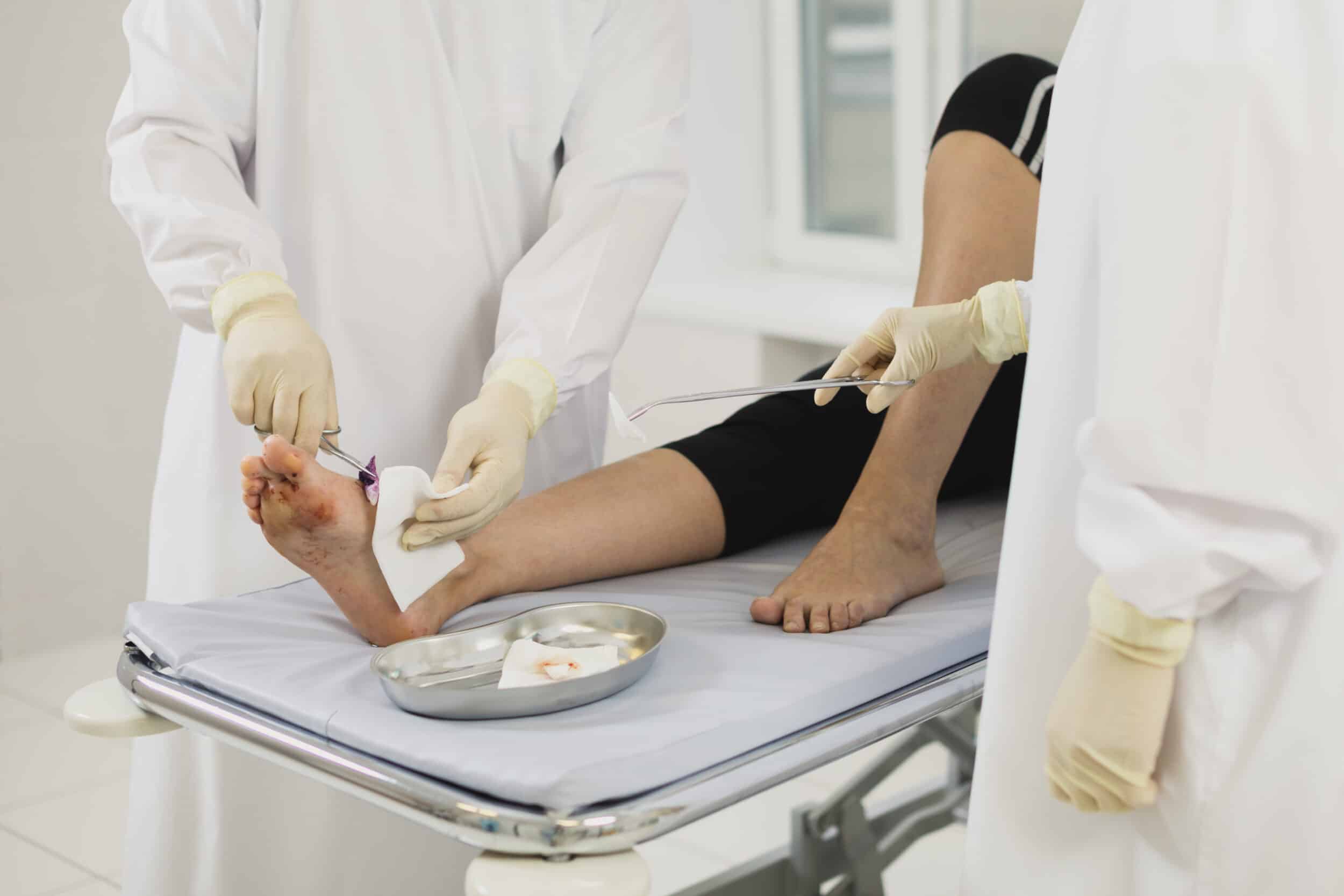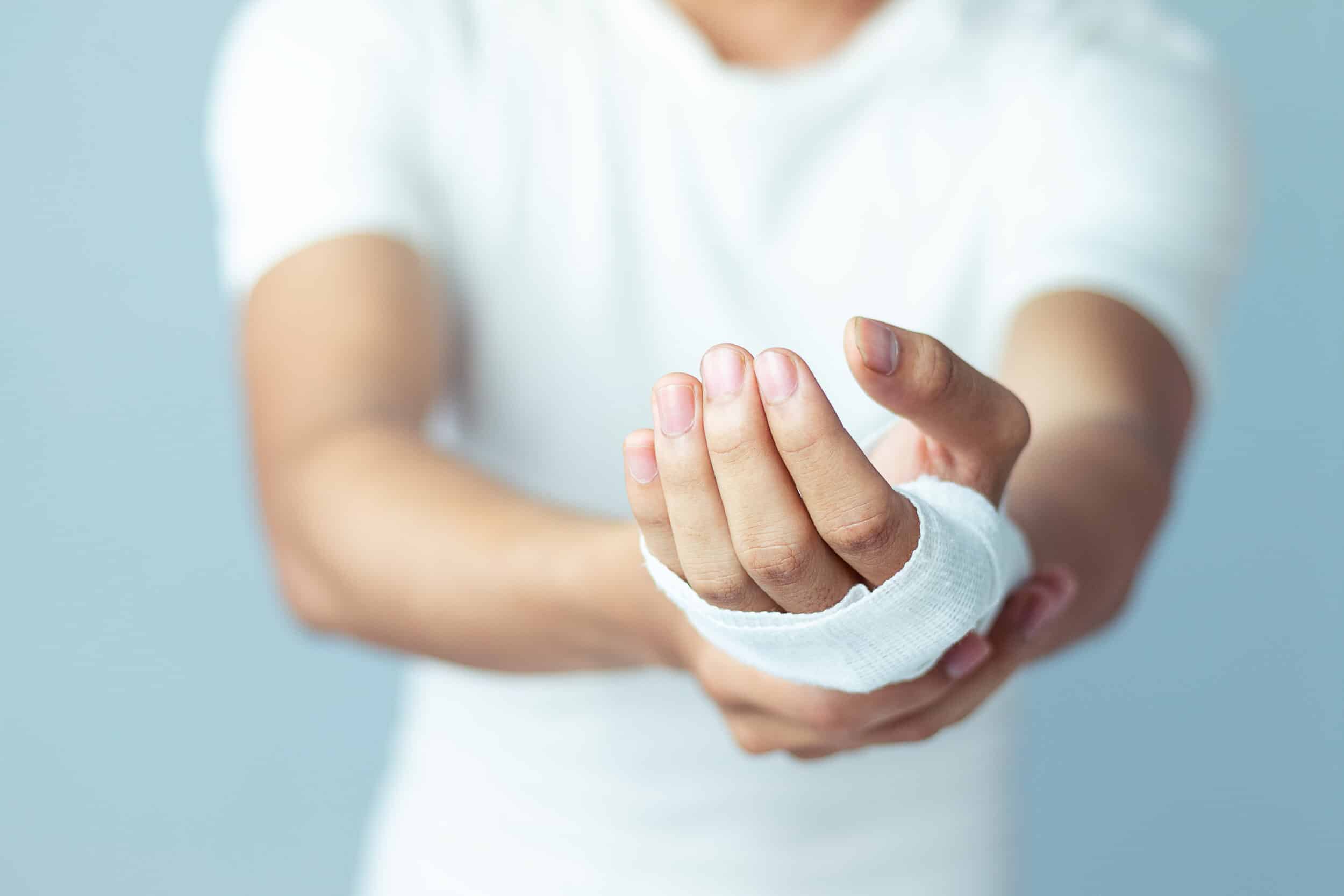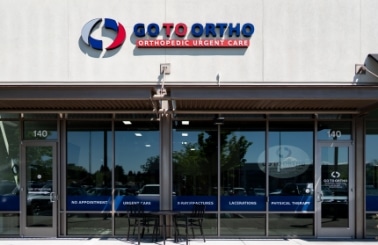A laceration implies a torn or jagged wound that varies in length. If a laceration is longer than a ½ inch or deeper than a ¼ inch, it is best to have it checked out, as it may require stitches, sutures or staples to completely close and safely heal a laceration.
Is There A Difference Between a Cut and Laceration?
A cut is a skin wound with a separation of connective tissue. None of the skin is missing, but it is separated. A laceration implies a torn or jagged wound that is usually deeper or wider and often needs stitches.

How Do You Know When Medical Care Is Necessary?
If you have any doubts at all, it’s always a good idea to play it safe, and seek medical attention for your laceration, especially if you cannot stop the bleeding, the wound edges are separated, or you cannot clean the wound adequately enough for it to heal properly. Plus, with any laceration, there is always the risk of infection, because sharp objects that usually cause them may be contaminated with bacteria or debris. If that is the case, your doctor will give you a tetanus vaccination or booster shot along with treatment.
Also, patients who have circulation problems or diabetics should always seek medical attention for open wounds, as they may require additional treatment to prevent infection.
Why Should You See Orthopedic Specialists for Lacerations?
You should see an orthopedic specialist for lacerations, because some lacerations may involve tendon and nerve damage. Sometimes these lacerations aren’t always immediately noticeable and can take days or weeks for such nerve or tendon damage to show up. Orthopedic specialists would be more apt to catch these and provide the immediate care you need.
Orthopedic specialists can also treat hand injuries that involve fingertip and nail bed lacerations. If these aren’t treated properly, these injuries can lead to hand function problems, permanent deformities or even a disability, as these are sensitive areas where bone and nerves are affected when exposed.
Come to see us for quick-care orthopedic injury treatment for cost-effective care at medical office rates, not hospital rates. Don’t let lacerations become complications.
How Do You Know If You Need Stitches?
There are four basic considerations as to whether or not you may need stitches:
- Depth. Is the wound deep enough to see the subcutaneous tissue (yellowish fatty tissue)?
- Width. Can the wound be pulled closed easily?
- Location. Is the wound in a location of the body that stretches and moves a lot (e.g., a wound on a calf)?
- Tetanus vaccination. How long has it been since you had your last tetanus vaccination? It is recommended that you have one every 10 years. If you need one, especially after having a laceration, go see a doctor and have your wound evaluated for stitches.
What Are the Benefits of Getting Stitches?
Getting a laceration stitched is a good idea for several reasons:
- Stops bleeding
- Promotes quicker healing
- Keeps bacteria out of the wound
- Prevents infection
- Protects underlying tissue
- Reduces scarring

What Types of Exams and Tests Are Done for Lacerations?
During your visit, your doctor will ask you several questions about your injury including:
- When did it happen?
- How did it happen?
- Do you have any problems with weakness or numbness?
- Do you have any allergies to adhesive tapes?
- Do you have any pre-existing medical conditions, such as circulation problems or diabetes?
Your physical exam will include:
Separating the edges and looking at the wound
Testing nerve, artery, and muscle function
Checking for objects in the cut (such as embedded glass or wood)
Examining your overall condition (such as whether you are pale from blood loss or anxiety)
If foreign objects or an underlying broken bone is suspected, an X-ray may be ordered.
How Do You Treat a Laceration?
Treatment for a laceration usually depends on how deep the cut is, but generally, the treatment process includes:
- Taking steps to stop the bleeding with direct pressure or the use of a blood pressure cuff
- Applying Medication to numb the area
- Topical medicine
- Direct injection of anesthetic into the wound
- Injection into a regional nerve (nerve block)
- Cleaning the wound
- Washing the skin with soap and water
- Removing crusted blood with diluted hydrogen peroxide
- Irrigating with saline at the wound site under high pressure to reduce bacterial contamination
- Repairing the wound
- Minor cuts can be closed with special adhesive tapes (Steri-Strips) or tissue glue
- Deeper cuts may need stitches to repair deep structures
- Applying bandages
- Telfa or Vaseline gauze that doesn’t stick to your cut
- Pressure bandages or splints that provide needed surface pressure or keeps an injury immobile
Is Follow-Up Care Required?
If you have sutures placed, your doctor may recommend that you have the wound checked 1 or 2 days after treatment, especially if there is a higher than 5% chance of infection or if changing the bandage is difficult.
Stitches may be removed at your doctor’s office anywhere between 4 and 14 days later. The actual time period depends on the location of the injury. For example, facial stitches are removed after 4 days and no later than 7 days, because healing occurs faster in this location of the body. Sutures in your hand may be left in 14 days or more because of slower healing and greater tension on the wound.
What Can You Do Minimize Scarring?

It is normal for a scar to look red and swollen after suture removal, and it can take up to 1 year for a scar to fade. In the meantime, there are several things you can do to minimize the possibility of scarring:
Infected wounds tend to scar more, so
- Keep an eye out for redness, swelling or other signs of infection and see a doctor
- Keep the wound covered and clean
- Avoid sun exposure as newly healed tissue burns more easily
Before consulting a specialist for scar revision, wait a year for the scar to fade.
What Are the Common Causes of Lacerations?
Lacerations are often the result of sharp objects or forceful impacts that tear the skin. Common causes include:
- Contact with Sharp Objects: Knives, glass, scissors, and other sharp tools can easily cut the skin, leading to lacerations.
- Blunt Trauma: Falls, car accidents, and physical altercations can cause the skin to split open due to the force of impact.
- Workplace Accidents: Industrial environments, construction sites, and kitchens often have tools and machinery that can cause lacerations if improperly handled.
- Sports Injuries: Contact sports, as well as activities like skateboarding or biking, can result in lacerations from collisions, falls, or contact with equipment.
- Household Incidents: Everyday activities such as cooking, gardening, or using household tools can lead to accidental injuries.
How Can I Prevent Lacerations While Engaging in Sports?
You can take several steps to prevent lacerations during sports, including:
- Using appropriate safety gear
- Maintaining equipment
- Following sport-specific safety protocols
- Wearing protective gear like helmets, gloves, and pads
- Ensuring that playing surfaces are free from hazards
- Ensuring that equipment is in good condition
- Adhering to the rules of the game and playing with awareness
What Should I Do Immediately After Getting a Laceration?
If you get a laceration, you must act quickly. Start by doing the following:
- Clean the wound with water to remove any debris
- Apply pressure with a clean cloth or bandage to stop bleeding
- Seek medical attention immediately if the bleeding is heavy or doesn't stop after a few minutes – you may need stitches or other treatments
Once the bleeding is controlled, cover the wound with a sterile bandage. Avoid touching it to prevent contamination and infection.
How Long Does It Typically Take for a Laceration To Heal?
The healing time for a laceration depends on its severity and how well it is cared for. Minor cuts may heal within a week. Meanwhile, deeper lacerations can take several weeks.
Certain factors can interfere with the healing process, including:
- Wound contamination
- Infections
- Medications (including antiplatelet drugs and anticoagulants)
- Disorders that suppress the immune system
- Malnutrition
How Can I Tell if My Laceration Has Damaged Nerves or Tendons?
Determining if a laceration has damaged nerves or tendons involves assessing the injury and its symptoms. Some warning signs to watch for include:
- Numbness
- Tingling
- A loss of sensation around the wound
- Difficulty moving the affected area
- Weakness
- An inability to perform certain motions
These symptoms require prompt medical evaluation to prevent long-term issues and ensure proper treatment.
Why Choose Go To Ortho?
When it comes to treating lacerations, Go To Ortho stands out as a top choice. The practice was founded by four renowned orthopedic surgeons — Dr. Steven Madey, Dr. Amer Mirza, Dr. Britton Frome, and Dr. Corey Vande Zandschulp. Launched in July 2017, Go To Ortho is the first immediate care clinic in the Portland area dedicated solely to injuries. The staff works hard to ensure patients receive expert care without the wait typically associated with emergency rooms.
The clinic's comprehensive team includes physician assistants, physical therapists, occupational therapists, x-ray technicians, and medical assistants. These professionals work together to provide patients with holistic care tailored to their needs. This multidisciplinary approach expedites recovery and addresses all facets of the injury, from diagnosis to rehabilitation.
Come See Us
At Go To Ortho, we treat lacerations on all areas of the body including the fingers, feet, arms, and face. Please come to see us for quick-care orthopedic injury treatment for cost-effective care at medical office rates, not hospital rates.
Walk-in appointments are welcome. View our hours.



